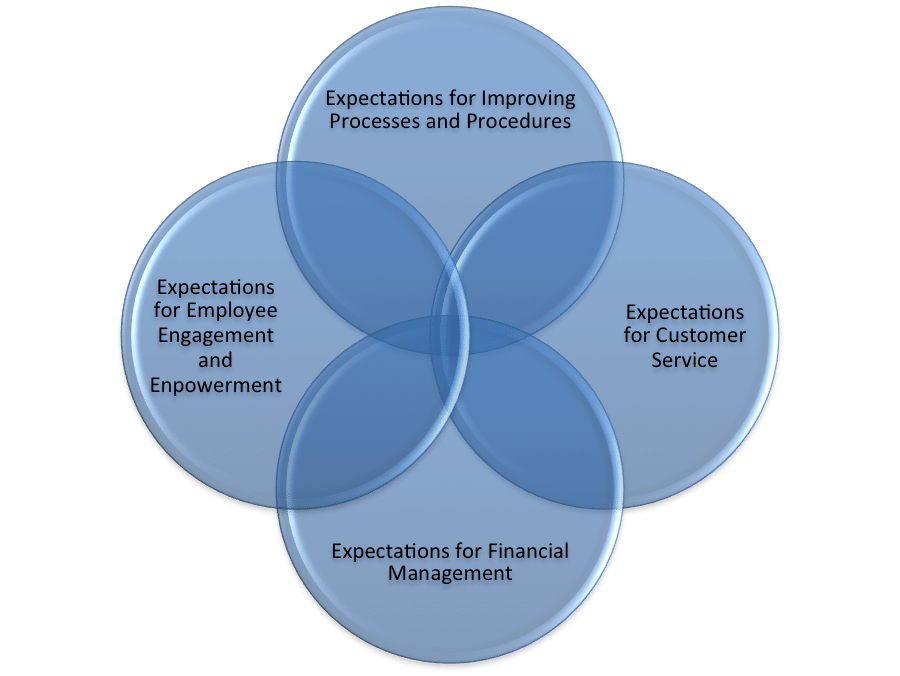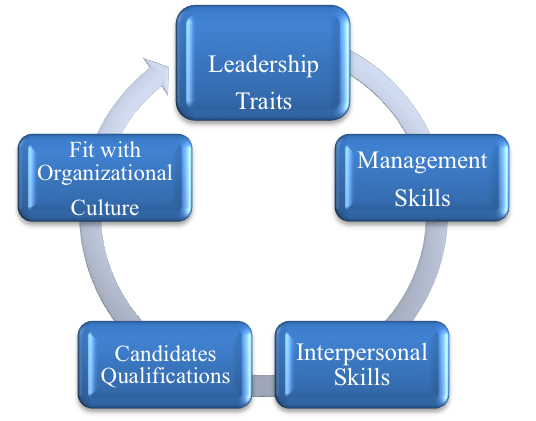Organizational Development
How can you assess your organization’s readiness to transition from a good state to a great one? What strengths does your organization possess, and where can improvements be made? In comparison to the world’s best-run organizations, where does your organization stand? The confidential online Baldrige survey offers a “Gap Analysis” that allows you to identify and concentrate on areas requiring enhancement within your organization to ensure the success of your strategic plan. This discreet survey evaluates your organization’s performance across the seven key areas outlined in the above chart. The findings from the Baldrige Survey serve as a foundation for devising specific projects and strategies aimed at enhancing the overall performance of your organization.
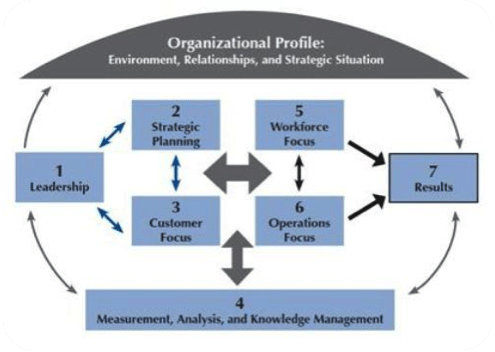
Process Improvement
As the leader of your organization, finding time for you and your staff to focus on solutions that enhance operations and reduce costs can be a daunting task. BridgeGroup offers a solution to help you reclaim that time and achieve immediate, implementable results to enhance key processes and operations within your organization.
BridgeGroup employs the innovative GE Workout approach to improve both internal and external processes. Here’s a brief overview of the GE Workout approach:
- Leadership Definition: Leaders define the issue or opportunity they want the team to address.
- Team Involvement: Enlist the individuals closest to the issue at hand to participate in the solution-finding process.
- Support and Development: Provide them with the necessary time, space, and support to carefully develop recommendations.
- Decision-Making: One of the most distinctive and powerful elements of the Workout is to bring the appropriate decision-makers into the room before the session concludes. They render decisions on the team’s approach and recommendations.
The Workout is a proven approach that can assist your organization in developing and implementing sustainable, innovative solutions.
Strategic Planning
The Integrated Strategic Planning approach establishes equilibrium by harmonizing both financial and human capital (employees) to concentrate on realizing the strategic goals and objectives outlined in the plan. While a strategic plan is more than a document outlining strategies, goals, and objectives to prioritize services, programs, and capital needs, it serves as a crucial element. Our process seamlessly integrates your budget process with the strategic plan, offering a comprehensive system for prioritizing strategic projects and work plans. This integration empowers your staff to enhance service delivery and effectiveness based on the strategies and goals delineated in the plan.
Moreover, BridgeGroup goes a step further by fully incorporating strategic plan projects and initiatives into the Board Agenda process. Using an innovative format and approach, BridgeGroup tailors the strategic plan to align with your specific needs and requirements.
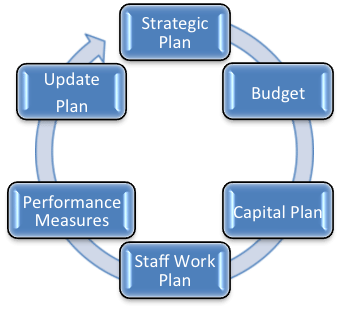
Training
Organizational learning is of paramount importance, and BridgeGroup excels in crafting customized approaches to tailor training programs according to the unique needs of your organization. Beginning with a clear understanding of the desired outcomes of your training, we design interactive and impactful training experiences. These sessions offer targeted leadership, management, and operational tools that can be directly applied to enhance the performance of your organization.
Teambuilding
What Sets Apart the Systems Approach to Teambuilding?
While many consultants discuss effective teamwork, the crucial factors lie in the foundation of their team-building approach and its targeted focus on areas where teamwork can yield significant benefits for your organization. Our teambuilding sessions go beyond generic prescriptions and are tailored to address your specific needs, ensuring that the focus is on enhancing your team’s effectiveness according to your unique requirements.
The BridgeGroup team building approach fosters reflective discussion and dialogue, aiming to pinpoint specific areas for improving teamwork within the organization. How does it work? The facilitator initiates the session with an overview of key elements and strategies for building effective teams. Groups engage in discussions centered around the four questions outlined in Diagram 1, with each group having a recorder to report their findings to the entire group after a designated period. The insights gleaned from these dialogues are then shared with the leadership team.
Diagram 2 outlines the process utilized during Retreats/Workshops and the subsequent follow-up required for leadership. The results from the four questions shape the development of a Teamwork Mission Statement.
What makes this approach superior?
It is a two-way process, with the consultant providing insights on effective teamwork and employees leveraging this information to establish standards for becoming a cohesive team.
It focuses on what employees perceive as necessary changes to enhance teamwork and outlines ways in which leadership can support them.
It culminates in a teamwork mission statement that serves as a tool to reinforce and promote teamwork throughout the organization.
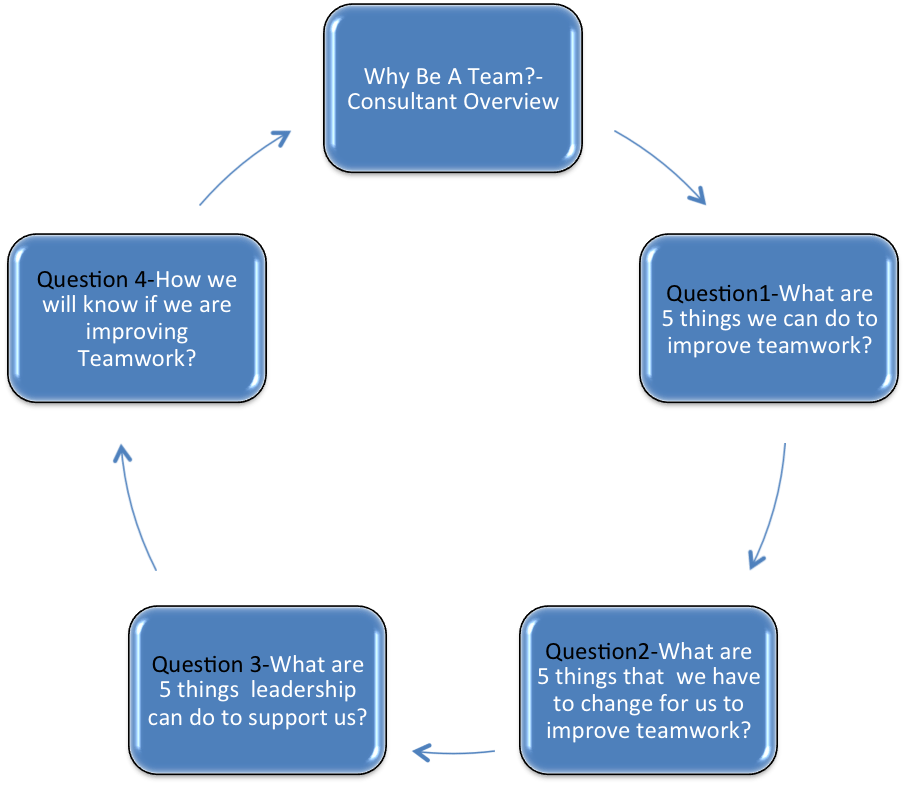
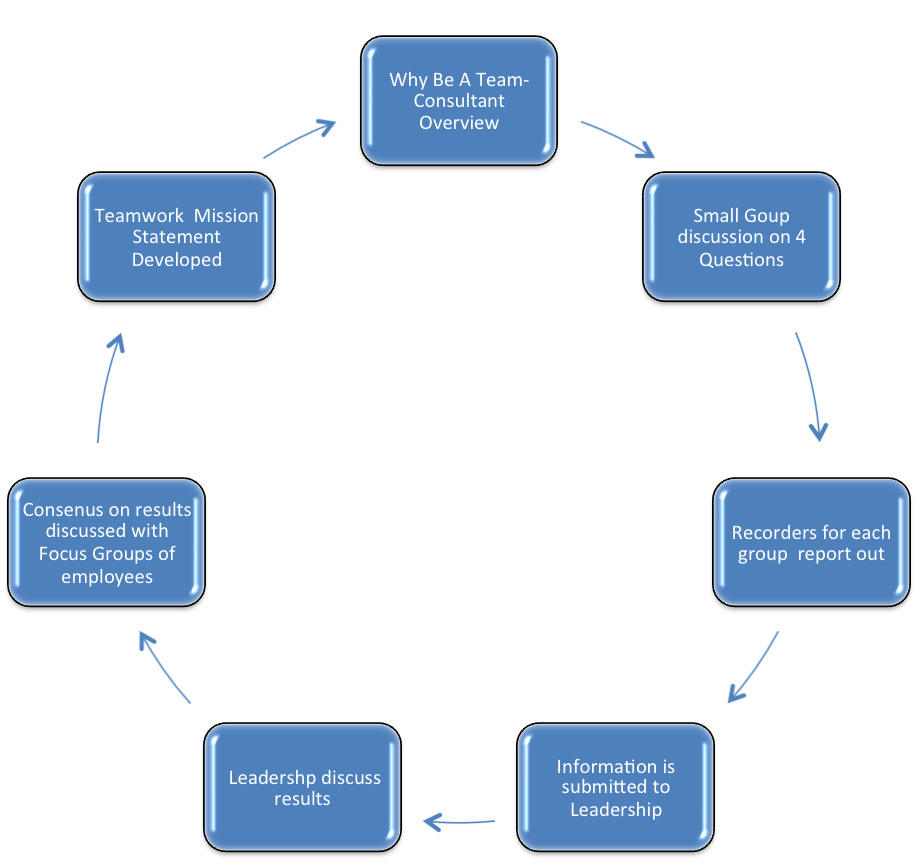

Board Governance Effectiveness
“Governing boards have been known in one form or another for centuries. Yet throughout those many years there has been a baffling failure to develop a coherent or universally applicable understanding of just what a board is for.” Carver’s Policy Governance Model in Non Profit Organizations
-By John Carver and Miriam Carver
Defining the role of a Governing Board can often be challenging, leading to a potential disconnect between the board and the executive. Ideally, an elected public board is tasked with policy development, while the executive or manager oversees the implementation of those policies and the day-to-day operations of the organization. However, the missing link is often the explicit expectations the Board has for the manager. So, why does this create friction between the roles?
The answer is often simple; we’ve neglected to establish expectations that the Board has for their manager. How can any employee function effectively if they don’t know what their supervisor expects of them? Conversely, the supervisor should know what the employee expects of them in order to perform their job. It is this shared set of expectations that provides the clarity needed for teamwork.
The Governance Relations System (GRS) serves as a crucial bridge, aligning the Board’s expectations with the manager’s responsibilities in the organization’s daily operations. Additionally, the GRS establishes expectations for the Board to actively support the manager’s success in executing those expectations.
The GRS comprises four essential areas:
1. Expectations of the Organization
2. Performance Expectations of the Manager
3. Expectations of the Board
4. Expectations of Customer Service/Civic Engagement
These areas delineate expectations for organizational management, Board conduct, and the provision of services and opportunities for citizen engagement. The key to the GRS’s efficacy lies in the collaborative partnership between the Board and the manager, establishing clear expectations for how the organization will operate. Visualized as a series of interconnected gears, the GRS serves as a driving force for the organization, guiding its management and leadership priorities.
The Governance Relations System (GRS) is specifically crafted to enhance the relationship and effectiveness between the Board and the manager. The outlined expectations provide benchmarks for the annual evaluation of the efforts of both the Board and the manager.

